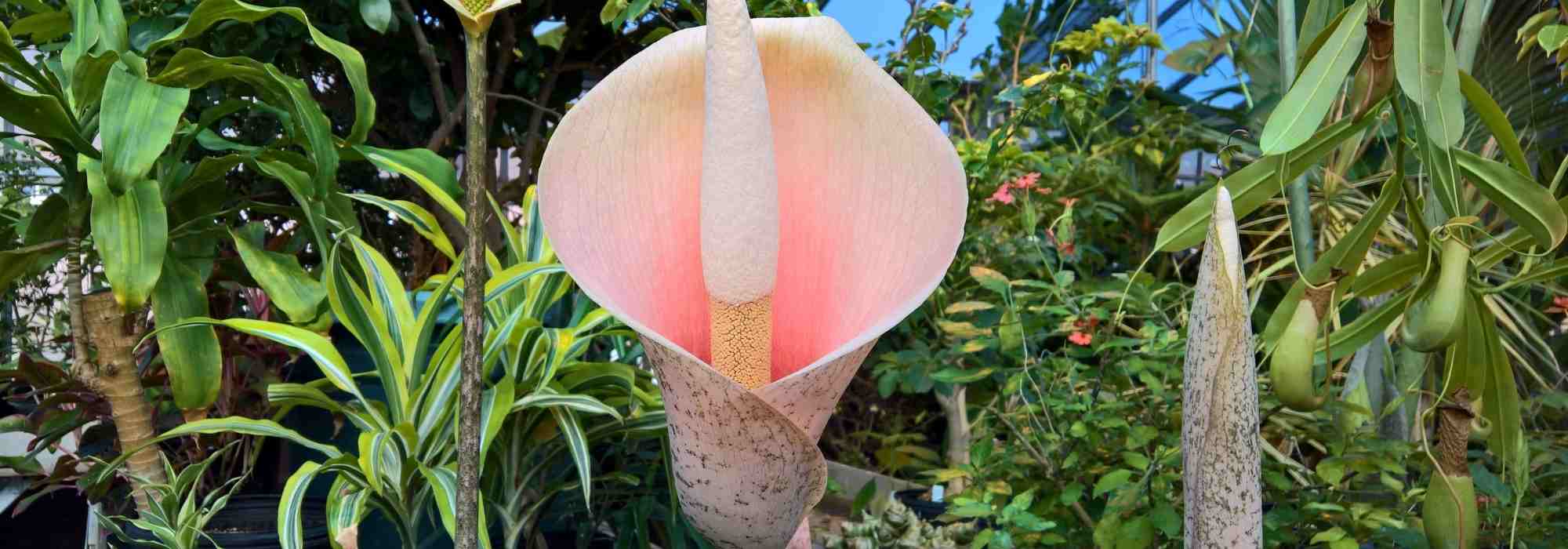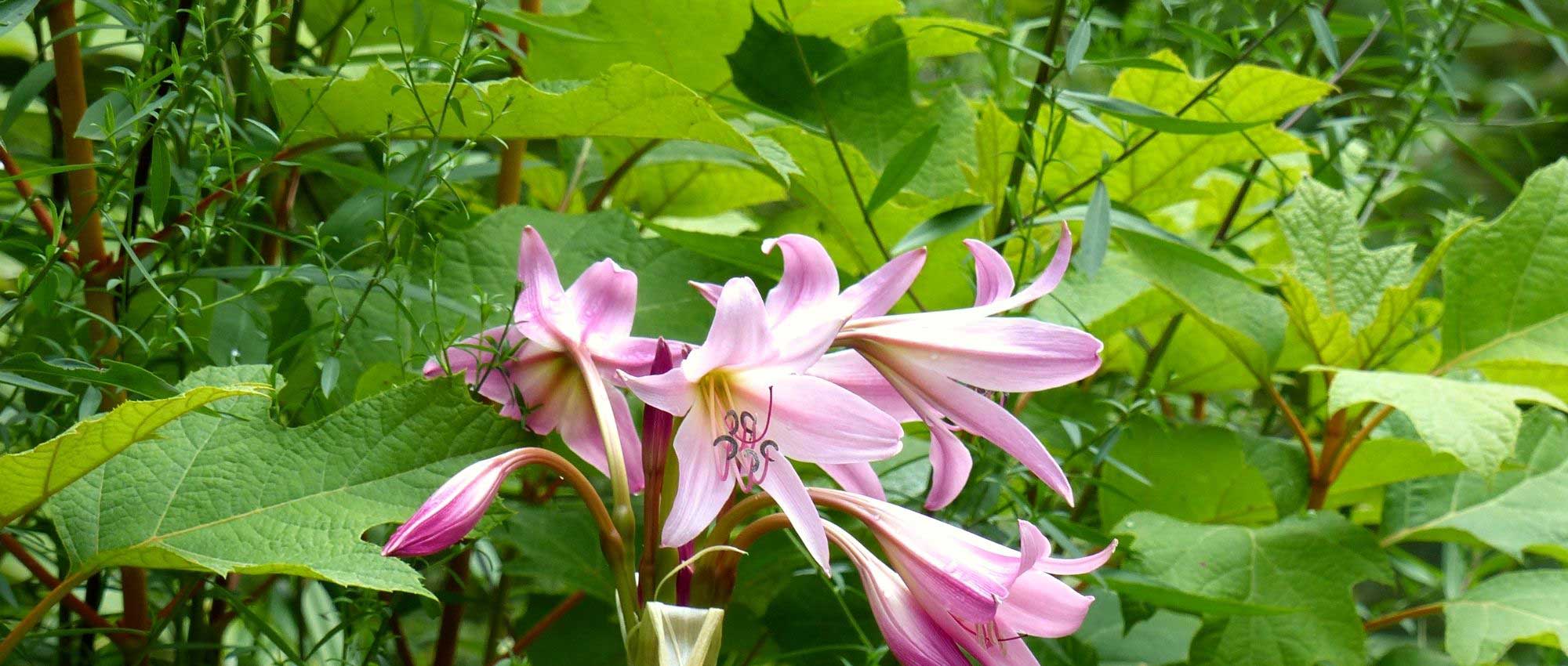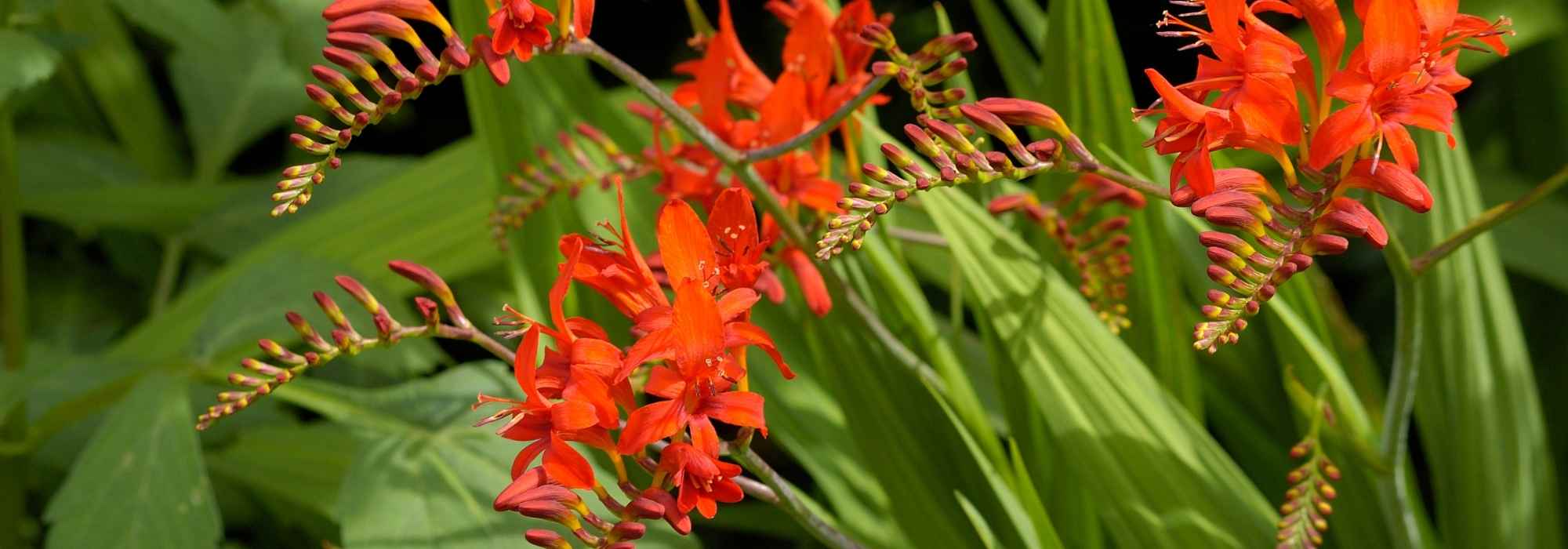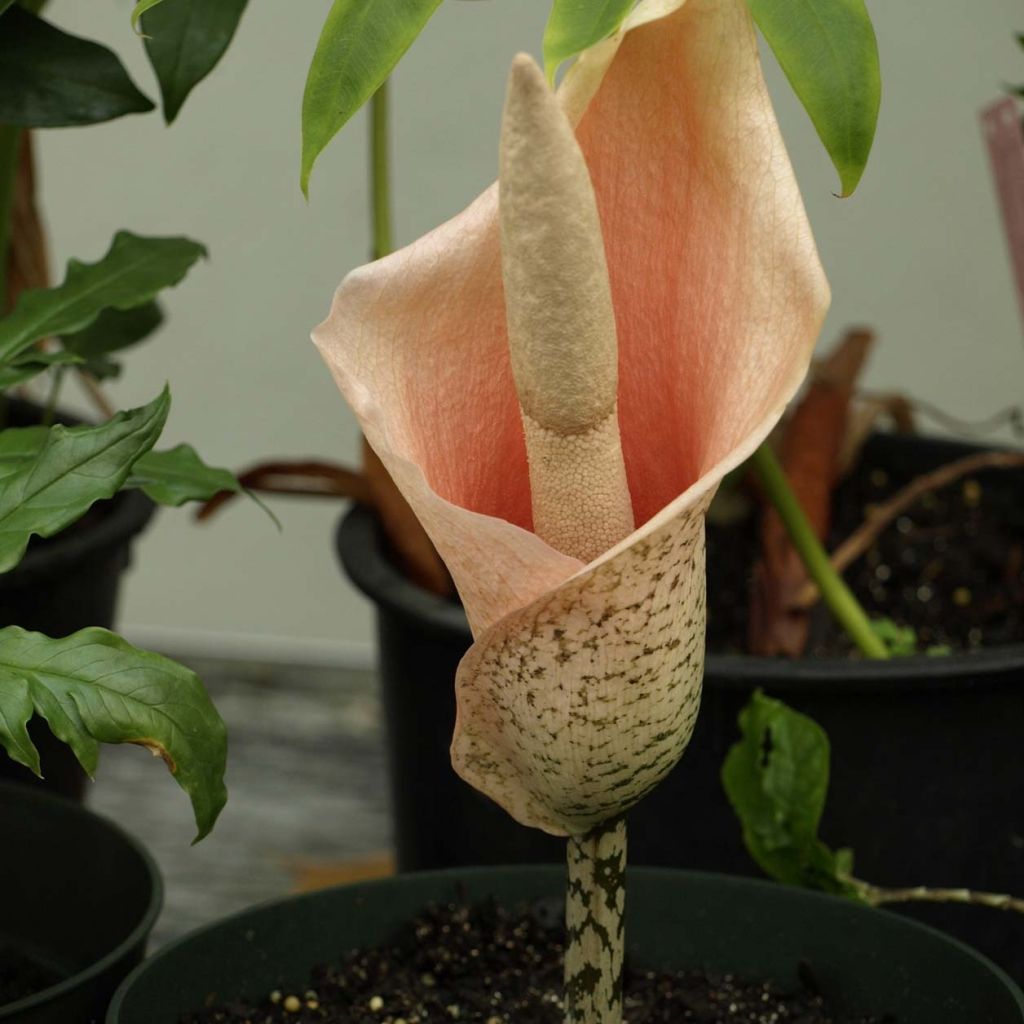

Amorphophallus bulbifer - Voodoo Lily
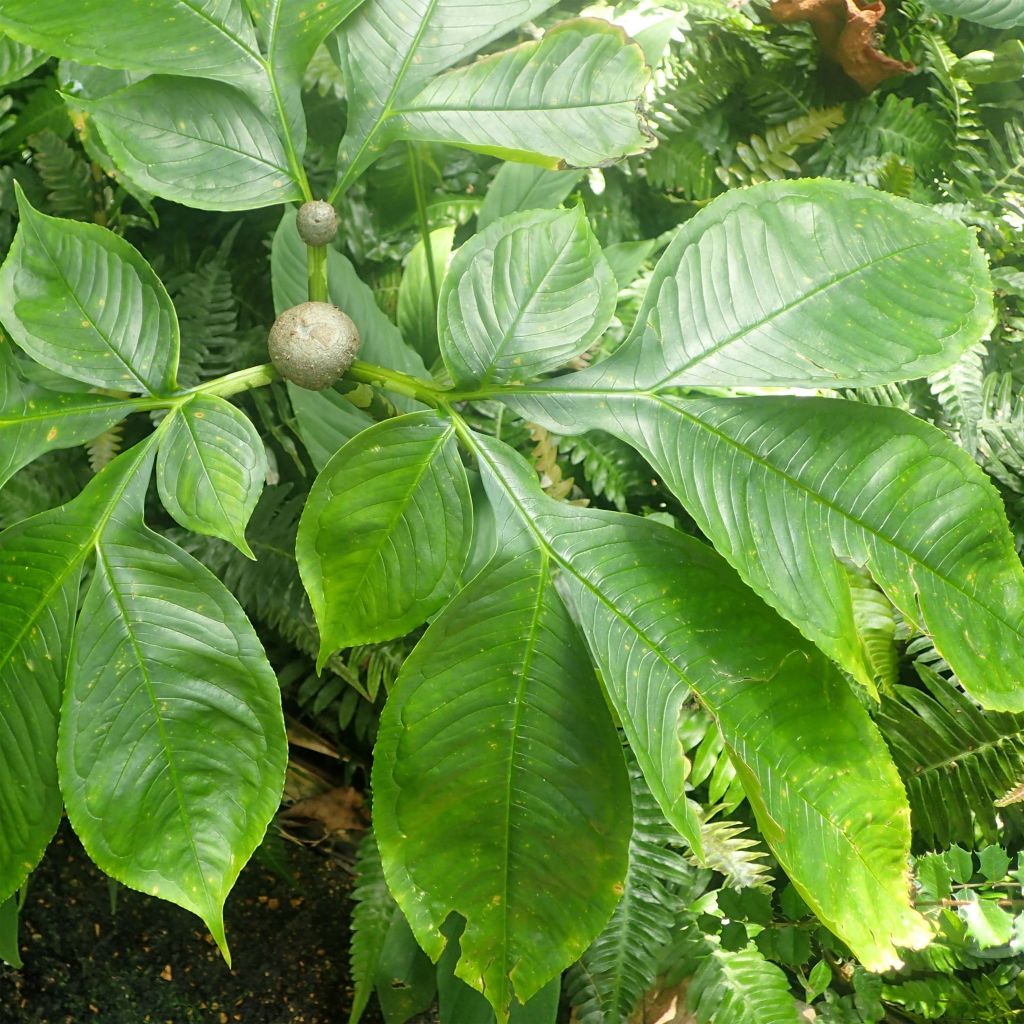

Amorphophallus bulbifer - Voodoo Lily
Amorphophallus bulbifer - Voodoo Lily
Amorphophallus bulbifer
Voodoo Lily, Devil's Tongue, Snake Palm
Beautiful bulbs of very large diameter, potted, they are of excellent quality. Thank you.
Nathalie89120, 31/03/2025
Special offer!
Receive a €20 voucher for any order over €90 (excluding delivery costs, credit notes, and plastic-free options)!
1- Add your favorite plants to your cart.
2- Once you have reached €90, confirm your order (you can even choose the delivery date!).
3- As soon as your order is shipped, you will receive an email containing your voucher code, valid for 3 months (90 days).
Your voucher is unique and can only be used once, for any order with a minimum value of €20, excluding delivery costs.
Can be combined with other current offers, non-divisible and non-refundable.
Home or relay delivery (depending on size and destination)
Schedule delivery date,
and select date in basket
This plant carries a 6 months recovery warranty
More information
We guarantee the quality of our plants for a full growing cycle, and will replace at our expense any plant that fails to recover under normal climatic and planting conditions.

Does this plant fit my garden?
Set up your Plantfit profile →
Description
Amorphophallus bulbifer, also known as the Voodoo lily by English speakers, is a fascinating Himalayan relative of the arums that will delight botanical enthusiasts. Growing from an underground tuber that can become enormous, this perennial plant unfurls a large and beautiful leaf divided into leaflets in late spring. It produces a decorative inflorescence, close to the ground, in the shape of a pale pink cone slightly speckled with green and pale brown on the outside. Although theoretically hardy down to -10°C (14°F), this beautiful species is easier to cultivate in a large pot kept dry in winter, as its bulb dreads overly wet soil at that time of year.
Amorphophallus bulbifer belongs to the large family of Araceae and is a wild plant native to the mountains of northern India, specifically from Nepal's Sikkim province. It grows in open forests in regions with a tropical climate characterized by two distinct seasons. It is a perennial herbaceous plant with a large tuberous root. This spectacular storage organ can eventually reach 30cm (12in) in length and weigh 1 to 2kg. The Latin name for this species, bulbifer, is due to a rare phenomenon: bulbils are born at the axils of the leaflets and the petiole branches of this plant.
The life cycle of Amorphophallus bulbifer is relatively short, from the time the leaf emerges from the ground in June to when the plant goes dormant at the end of summer or early autumn. The size of this Amorphophallus depends on the growing conditions: when exposed to sunlight, the plant will be more compact (1m (3ft) in height) than if it is placed in partial shade, where its leaf can reach heights of up to 1.50m (5ft) or more. In spring, a dark green petiole speckled with white emerges from the ground, carrying the single leaf. It grows rapidly, with a shiny, veined, ovate-shaped lamina divided into lobes with toothed edges. Flowering occurs on plants several years old and emerges above the ground, at the base of the plant, in spring before the foliage. The inflorescence is a spathe, resembling a large Arum cone, with a central column. The spathe measures 20cm (8in) in height. It starts off yellowish and gradually turns a pale pink. The reverse side is lightly speckled. The spadix, which extends beyond the spathe, is almost white. This inflorescence is pollinated by flies. The fruiting is a tight cluster of rounded fruits that change from yellow to light red.
The cultivation of Amorphophallus bulbifer is primarily done in a very large pot, although this species can be grown in the ground in mild regions if its stump is protected from rain in winter. Burying the pot in the garden during the growing season allows it to be sheltered in winter. It is an original and spectacular plant for light woodland areas. It can be paired with ferns, Fatsias, or non-invasive Fargesia bamboos, for example.
Amorphophallus bulbifer - Voodoo Lily in pictures




Plant habit
Flowering
Foliage
Botanical data
Amorphophallus
bulbifer
Araceae
Voodoo Lily, Devil's Tongue, Snake Palm
Himalayas
Planting and care
Plant Amorphophallus bulbifer in a partially shaded or slightly sunny location, in light soil, rich in humus (undergrowth soil), remaining moist from May to September. A mixture of heath soil and good quality compost will work well. However, the soil should be rather dry in winter. In open ground, place a good layer of dead leaves or straw on the stump, covering it all with a plastic sheet to keep it dry. Watering should be regular throughout the growth period, but not excessive: a constantly waterlogged soil can cause the large rootstock to rot. The aerial bulblets can be replanted, they will produce new plants.
Pot cultivation: it allows to protect the bulb from humidity in winter. The pot will be placed in a garage or a poorly heated room and taken out in April.
You will choose a container of suitable size, which will be at least twice as wide and deep as the rootstock to allow the roots to develop well. Feed your plant with a seaweed-based fertilizer, from May to August.
Planting period
Intended location
Care
Planting & care advice
-
, onOrder confirmed
Reply from on Promesse de fleurs
Haven't found what you were looking for?
Hardiness is the lowest winter temperature a plant can endure without suffering serious damage or even dying. However, hardiness is affected by location (a sheltered area, such as a patio), protection (winter cover) and soil type (hardiness is improved by well-drained soil).

Photo Sharing Terms & Conditions
In order to encourage gardeners to interact and share their experiences, Promesse de fleurs offers various media enabling content to be uploaded onto its Site - in particular via the ‘Photo sharing’ module.
The User agrees to refrain from:
- Posting any content that is illegal, prejudicial, insulting, racist, inciteful to hatred, revisionist, contrary to public decency, that infringes on privacy or on the privacy rights of third parties, in particular the publicity rights of persons and goods, intellectual property rights, or the right to privacy.
- Submitting content on behalf of a third party;
- Impersonate the identity of a third party and/or publish any personal information about a third party;
In general, the User undertakes to refrain from any unethical behaviour.
All Content (in particular text, comments, files, images, photos, videos, creative works, etc.), which may be subject to property or intellectual property rights, image or other private rights, shall remain the property of the User, subject to the limited rights granted by the terms of the licence granted by Promesse de fleurs as stated below. Users are at liberty to publish or not to publish such Content on the Site, notably via the ‘Photo Sharing’ facility, and accept that this Content shall be made public and freely accessible, notably on the Internet.
Users further acknowledge, undertake to have ,and guarantee that they hold all necessary rights and permissions to publish such material on the Site, in particular with regard to the legislation in force pertaining to any privacy, property, intellectual property, image, or contractual rights, or rights of any other nature. By publishing such Content on the Site, Users acknowledge accepting full liability as publishers of the Content within the meaning of the law, and grant Promesse de fleurs, free of charge, an inclusive, worldwide licence for the said Content for the entire duration of its publication, including all reproduction, representation, up/downloading, displaying, performing, transmission, and storage rights.
Users also grant permission for their name to be linked to the Content and accept that this link may not always be made available.
By engaging in posting material, Users consent to their Content becoming automatically accessible on the Internet, in particular on other sites and/or blogs and/or web pages of the Promesse de fleurs site, including in particular social pages and the Promesse de fleurs catalogue.
Users may secure the removal of entrusted content free of charge by issuing a simple request via our contact form.
The flowering period indicated on our website applies to countries and regions located in USDA zone 8 (France, the United Kingdom, Ireland, the Netherlands, etc.)
It will vary according to where you live:
- In zones 9 to 10 (Italy, Spain, Greece, etc.), flowering will occur about 2 to 4 weeks earlier.
- In zones 6 to 7 (Germany, Poland, Slovenia, and lower mountainous regions), flowering will be delayed by 2 to 3 weeks.
- In zone 5 (Central Europe, Scandinavia), blooming will be delayed by 3 to 5 weeks.
In temperate climates, pruning of spring-flowering shrubs (forsythia, spireas, etc.) should be done just after flowering.
Pruning of summer-flowering shrubs (Indian Lilac, Perovskia, etc.) can be done in winter or spring.
In cold regions as well as with frost-sensitive plants, avoid pruning too early when severe frosts may still occur.
The planting period indicated on our website applies to countries and regions located in USDA zone 8 (France, United Kingdom, Ireland, Netherlands).
It will vary according to where you live:
- In Mediterranean zones (Marseille, Madrid, Milan, etc.), autumn and winter are the best planting periods.
- In continental zones (Strasbourg, Munich, Vienna, etc.), delay planting by 2 to 3 weeks in spring and bring it forward by 2 to 4 weeks in autumn.
- In mountainous regions (the Alps, Pyrenees, Carpathians, etc.), it is best to plant in late spring (May-June) or late summer (August-September).
The harvesting period indicated on our website applies to countries and regions in USDA zone 8 (France, England, Ireland, the Netherlands).
In colder areas (Scandinavia, Poland, Austria...) fruit and vegetable harvests are likely to be delayed by 3-4 weeks.
In warmer areas (Italy, Spain, Greece, etc.), harvesting will probably take place earlier, depending on weather conditions.
The sowing periods indicated on our website apply to countries and regions within USDA Zone 8 (France, UK, Ireland, Netherlands).
In colder areas (Scandinavia, Poland, Austria...), delay any outdoor sowing by 3-4 weeks, or sow under glass.
In warmer climes (Italy, Spain, Greece, etc.), bring outdoor sowing forward by a few weeks.






























